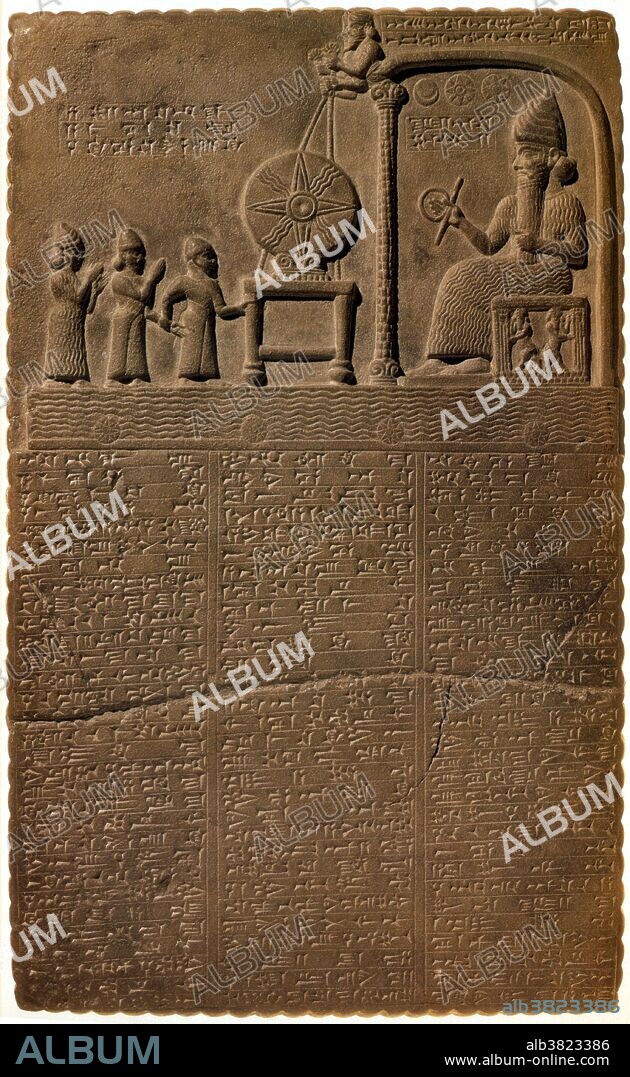alb3823386
Tablet of Shamash, 9th Century BC

|
Ajouter à une autre Lightbox |
|
Ajouter à une autre Lightbox |



Avez-vous déjà un compte? S'identifier
Vous n'avez pas de compte ? S'inscrire
Acheter cette image

Titre:
Tablet of Shamash, 9th Century BC
Légende:
Voir la traduction automatique
The Tablet of Shamash is a stone tablet recovered from the ancient Babylonian city of Sippar in southern Iraq in 1881. The bas-relief on the top of the obverse shows Shamash, the Sun God, beneath symbols of the Sun, Moon and Venus. He is depicted in a seated position in a shrine, holding forward a measuring rod and reel of cord. There is another large sun disk in front of him on an altar, suspended from above by two figures. Of the three other figures on the left, the central one is dressed in the same fashion as Shamash and is assumed to be the Babylonian king Nabu-apla-iddina receiving the symbols of deity. The cuneiform text beneath the stele is divided into fifteen passages, blending prose, poetic and rhetorical elements in the fashion typical of Mesopotamian royal inscriptions. It tells how Sippar and the Ebabbar temple of Shamash had fallen into disrepair with the loss of the statue of the God. This cult image is temporarily replaced with the solar disk; it is further described how a new figure of Shamash was found in an eastern part of the Euphrates, from which Nabu-apla-iddina has constructed a new statue of lapis lazuli and gold to restore the cult.
Personnalités:
Crédit:
Album / Science Source / New York Public Library
Autorisations:
Modèle: Non - Propriété: Non
Questions sur les droits?
Questions sur les droits?
Taille de l'image:
2927 x 4758 px | 39.8 MB
Taille d'impression:
24.8 x 40.3 cm | 9.8 x 15.9 in (300 dpi)
Mots clés:
ARCHÉLOGIE • ARCHEOLOGIE • ARCHÉOLOLOGIE • ART ACADIEN • ASSYRIAN • BABYLONE • DIEU DU SOLEIL • DIEU SOLEIL • MESOPOTAMIAN • RELIGION • SOLEIL, DIEU
 Pinterest
Pinterest Twitter
Twitter Facebook
Facebook Copier le lien
Copier le lien Email
Email
